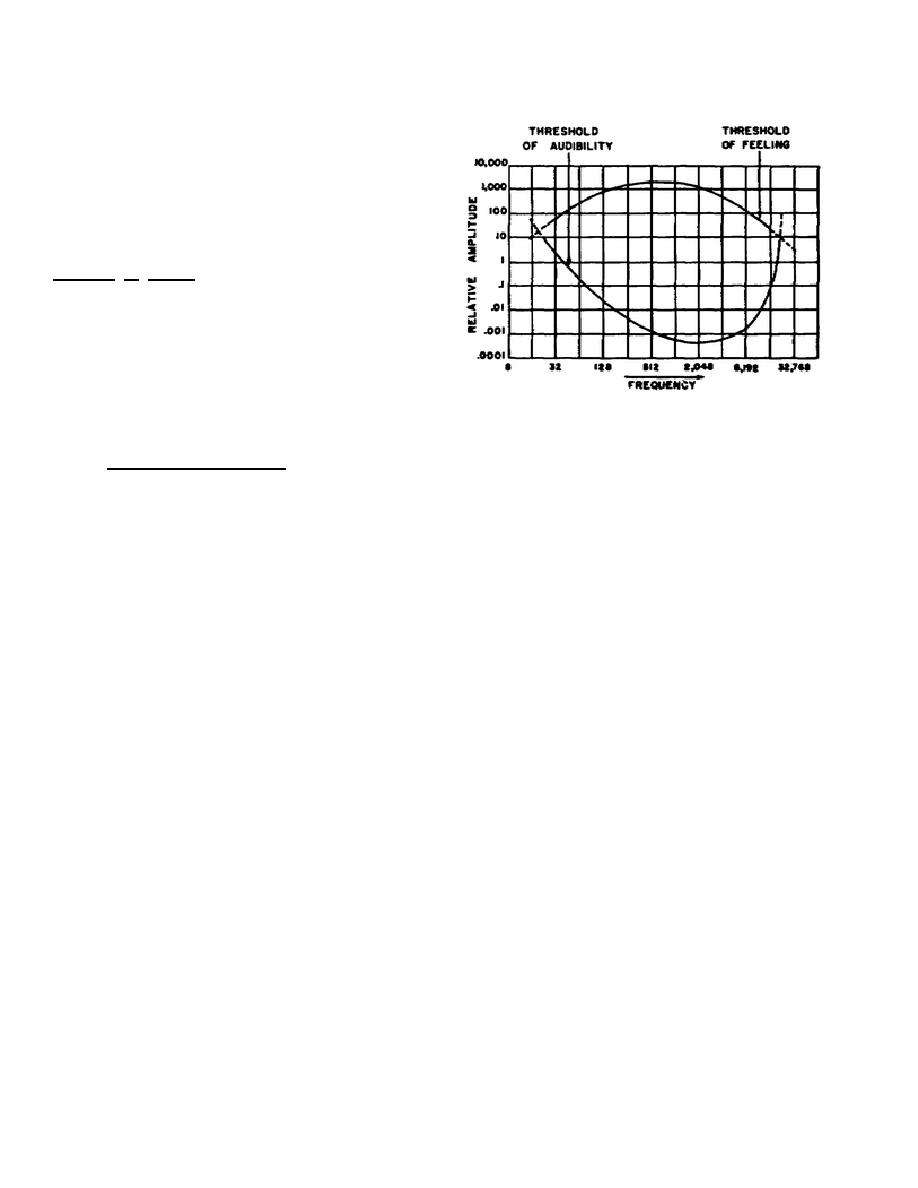
of 2,000 hertz. As a person grows older the ability to hear sounds at higher frequencies diminishes.
c. As the amplitude of a sound wave is
increased the sound becomes louder until a point
is reached where the sound is no longer heard.
The body continues to feel the vibrations;
however, if the amplitude is increased still
further, a point is reached where there is a
sensation of pain. This point is called the
threshold of feeling, and it also varies with
frequency and with the individual. The upper
curve of figure 7 shows the threshold of feeling
of the average person and how it varies with
FIGURE 7. Curves of Normal Hearing Ability.
14.
Face-to-Face Conversation.
A statement of the larger factor involved in face-to-face conversation will prove of value in helping the
reader to grasp the more complex problems encountered in the transmission of sound over telephone wires.
In face-to-face conversation the speech sounds of one person are transmitted to the ears of another by means of
the intervening air. The distance between the individuals usually is small, so that there is very little loss (attenuation)
of power in the transmission process, and the speaker may keep their voices at a normal conversation level.
One is accustomed to the way the voice of an acquaintance sounds during face-to-face conversation, and hears in the
voice what one feels is complete "naturalness" of tone and quality. (One even hears in one's own voice what is thought to
be complete naturalness of tone and quality, although one becomes surprised at the difference when a voice recording is
heard.) Also in face-to-face conversation additional meanings are received from the facial expressions and gestures which
accompany the spoken words. This is an important factor, especially for the many people who are hard of
21


 Previous Page
Previous Page
